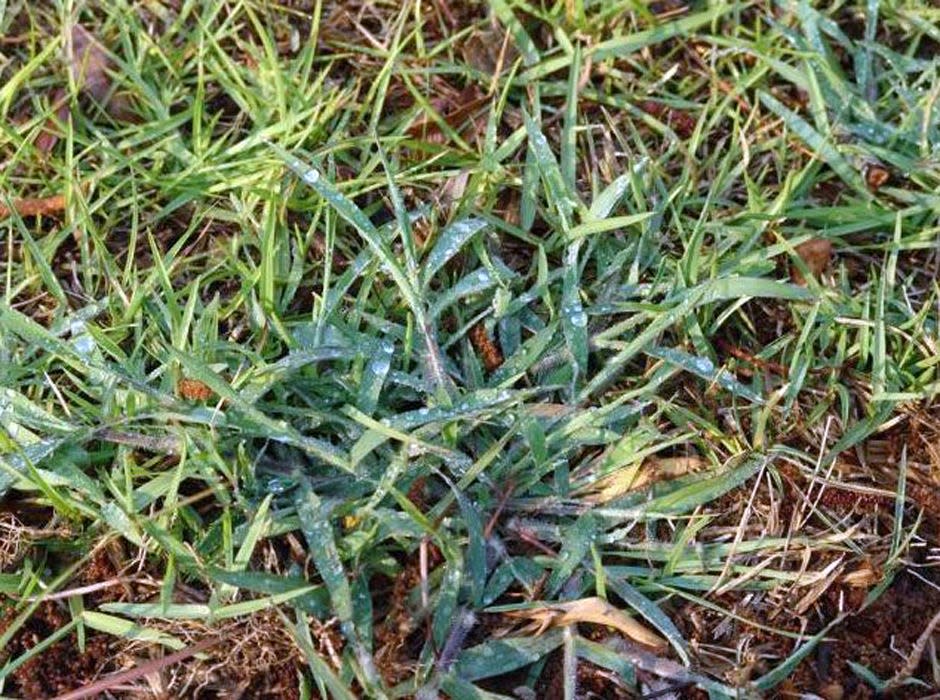Crabgrass is best controlled in the spring. Here's how to tackle it.

Crabgrass is a common lawn and garden weed best controlled in the spring. Proper timing is essential for effective control of crabgrass, and products applied too early or too late in the season are wasted.
In April, typically between April 1 and 15, crabgrass preemergence herbicide should be applied to areas that have had crabgrass in prior years. These products do not kill the crabgrass seeds, but rather kill the crabgrass plants just as they are emerging from the seed. This means most pre-emergent products will have no effect on existing crabgrass plants.
A pre-emergence applied in the late spring or summer will have no effect on established plants and does nothing to stop crabgrass from invading your lawn or garden.
Due to the limited time these products are effective after application, generally about 60 days or less, there is a signal we can take from Mother Nature to help us ensure products are applied at the proper time. Look for the redbuds to bloom. Eastern Redbud trees are native to Kansas and abundant in our landscapes.
When they reach full bloom, apply crabgrass preventer to ensure the product will be well timed with crabgrass germination.
As with all chemical applications, pay close attention to the product label and directions. Products that include pendimethalin (Scotts Halts) and Team (Hi-Yield Crabgrass Control) will require a follow-up application. Dimension or Barricade do not require follow-up applications. Both Dimension and Barricade last much longer in the environment and have a wider window of application and longer persistence in the soil, resulting in season-long control.
Dimension can also have an effect on young crabgrass plants and works favorably with tall fescue, perennial ryegrass, and Kentucky bluegrass seedlings. Again, label directions should be followed.
The safest schedule to prevent crabgrass preemergent products from affecting new lawns is to seed in the fall and apply preemergent for crabgrass in the spring. Dimension may also be sold under the name of its active ingredient, dithiopyr, and Barricade may be sold by its active ingredient, prodiamine.
Crabgrass preventers should be applied before fertilizer to reduce the likelihood that the grass will put on growth too early in the season. Many products combine preemergent and fertilizer, but the below products do not.
• Barricade: Howard Johnson Crabgrass Control Plus with 0.37 Prodiamine 00-00-07.
• Pendimethalin: Scotts Halts.
• Team (Benefin + Trifluralin): Hi-Yield Crabgrass Control.
• Dimension: Hi-Yield Turf & Ornamental Weed and Grass Stopper.
If you have not already, make sure to test your soil every three to five years and follow those recommendations for fertilizer. Often, we find lawns and gardens are overfertilized which can sometimes cause issues, like brown patch, in lawns. For more information about soil testing, visit the Shawnee County Extension website.
The mention of commercial products and trade names is for educational and informational purposes only. No endorsement is intended, nor is criticism implied of similar products not mentioned. Please make sure to read all product label thoroughly and follow those instructions exactly. The label is the law.
Ariel Whitely-Noll is the horticulture agent for Shawnee County Research and Extension. She can be reached at arielw@ksu.edu.

This article originally appeared on Topeka Capital-Journal: Spring is the best time to control crabgrass. Here's how to do it.

